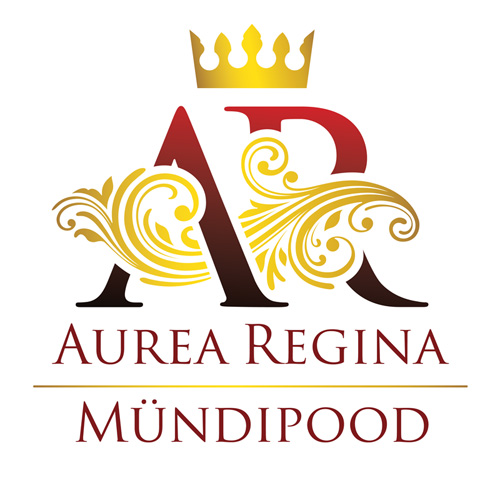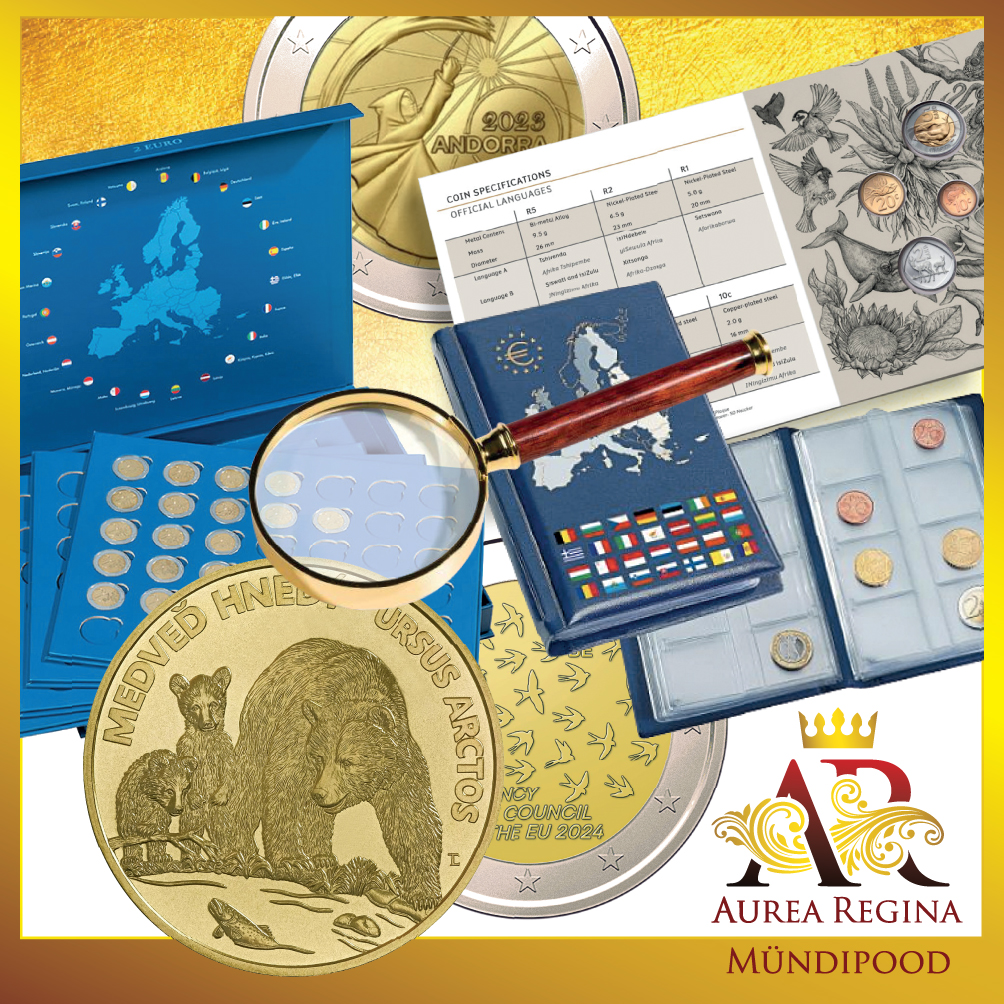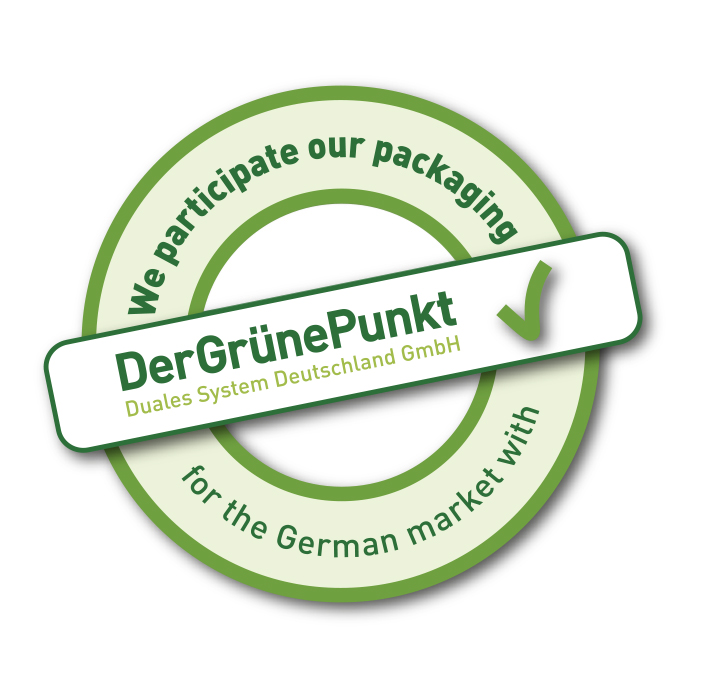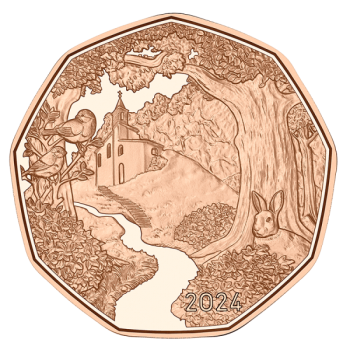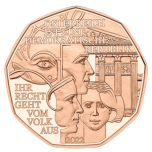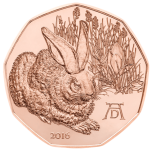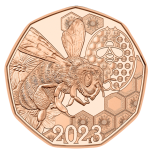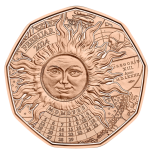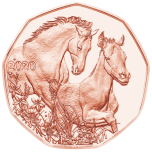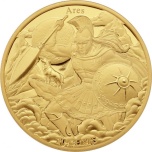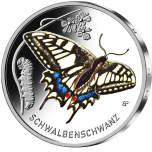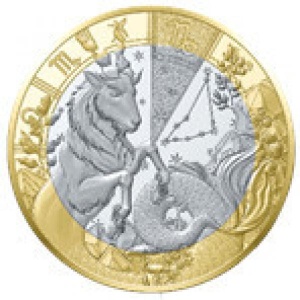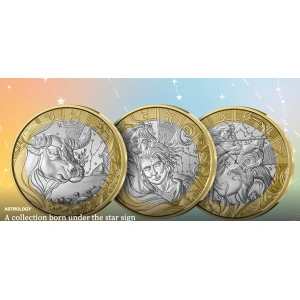Easter Coin 2024. Getting There - 5 € 2023 copper coin, 8,5 g
Price:
19,00 €
Quality: Special Uncirculated
Face Value: 5 Euro
Diameter: 28,5 mm
Copper: 99,9%
Total Weight: 8,5 g
Mintage: 50 000
Comes without packaging
Leave winter behind you with the help of our inspiring spring coin, Getting There. As you walk towards the sun, you become more receptive to the beauty of nature and with each step you get closer to yourself. Walking is so good for us, so why not encourage a friend or loved one to take to the trail with the gift of this great little companion piece and talisman. A gift from the heart, it will give motivate them to set off on a spring stroll for the soul – and if they have lost their bearings, it can help them find their way back. But where does the path lead us? Will it take us even deeper into the forest? Or will it lead us out of it? What lies over the the next ridge? Will the path lead us up the mountain before guiding us safely down into the valley below? The path meanders this way and that, up and down, as if it does not know where it is going itself. It does this out of pure modesty, out of respect for nature and out of cautiousness. It is gentle with those who walk it, too. It draws us forwards, both taking its time and giving us time by inviting us to dawdle, to pause and to marvel. It shows us the world and its big little secrets. The meaning of walking is not only measured by where it leads us. The very act of walking is meaningful in itself, it energises body and mind, and gives direction to the lost and confused. Walking changes those who walk. It helps us see that the path of life is not something irrevocable but part of an ongoing process, a kind of pilgrimage to happiness and contentment. We may not always know exactly where it is taking us, but it gets us there in the end. The path on the coin’s reverse winds its way up to the picturesque Falkenstein church, which is built into the rock in woodland near St Wolfgang in the Salzkammergut region of central Austria. The coats of arms of the nine federal provinces of Austria feature on the coin’s obverse and give the coin its nine-sided shape. Getting There is available in both copper and silver.
Face Value: 5 Euro
Diameter: 28,5 mm
Copper: 99,9%
Total Weight: 8,5 g
Mintage: 50 000
Comes without packaging
Leave winter behind you with the help of our inspiring spring coin, Getting There. As you walk towards the sun, you become more receptive to the beauty of nature and with each step you get closer to yourself. Walking is so good for us, so why not encourage a friend or loved one to take to the trail with the gift of this great little companion piece and talisman. A gift from the heart, it will give motivate them to set off on a spring stroll for the soul – and if they have lost their bearings, it can help them find their way back. But where does the path lead us? Will it take us even deeper into the forest? Or will it lead us out of it? What lies over the the next ridge? Will the path lead us up the mountain before guiding us safely down into the valley below? The path meanders this way and that, up and down, as if it does not know where it is going itself. It does this out of pure modesty, out of respect for nature and out of cautiousness. It is gentle with those who walk it, too. It draws us forwards, both taking its time and giving us time by inviting us to dawdle, to pause and to marvel. It shows us the world and its big little secrets. The meaning of walking is not only measured by where it leads us. The very act of walking is meaningful in itself, it energises body and mind, and gives direction to the lost and confused. Walking changes those who walk. It helps us see that the path of life is not something irrevocable but part of an ongoing process, a kind of pilgrimage to happiness and contentment. We may not always know exactly where it is taking us, but it gets us there in the end. The path on the coin’s reverse winds its way up to the picturesque Falkenstein church, which is built into the rock in woodland near St Wolfgang in the Salzkammergut region of central Austria. The coats of arms of the nine federal provinces of Austria feature on the coin’s obverse and give the coin its nine-sided shape. Getting There is available in both copper and silver.
Sarnased tooted
Quality: Uncirculated
Face Value: 5 Euro
Diameter: 28,5 mm
Material: Copper
Total Weight: 8,9 g
Mintage: 200 000
A coin the likes of which Austria has never seen before, Democracy is made from copper from the former roof of the Parliament building in Vienna. When you purchase the coin you therefore acquire a little piece of democracy and by spending 5 euros you get something priceless in return.
On the occasion of the reopening of the Parliament building in Vienna, we are issuing this very special coin. The copper it contains originally formed part of the former roof of the building but was removed during the ongoing renovation of the building. By using it to make the copper edition of the Democracy coin, we are making our democratic tradition something tangible. A strong democracy thrives on discourse. Our opinions may differ, but our consensus is democracy. Likewise, fundamental rights and freedoms make a democracy what it is. They enable individual and social freedom and guarantee the co-determination of the individual.
The coin’s reverse features two heads in profile and one full face, which represent the people as sovereign. To the left, we see a watchful eye surrounded by stylised laurel leaves, to the right, we see a section of the Austrian Parliament building in the background. But much more than this, the coin illustrates the spirit from which our nation was born. This is reflected in the Austrian Constitution, where it says: "Austria is a democratic republic. Its law emanates from the people." These wise words appear on the top and bottom edges of the coin.
Face Value: 5 Euro
Diameter: 28,5 mm
Material: Copper
Total Weight: 8,9 g
Mintage: 200 000
A coin the likes of which Austria has never seen before, Democracy is made from copper from the former roof of the Parliament building in Vienna. When you purchase the coin you therefore acquire a little piece of democracy and by spending 5 euros you get something priceless in return.
On the occasion of the reopening of the Parliament building in Vienna, we are issuing this very special coin. The copper it contains originally formed part of the former roof of the building but was removed during the ongoing renovation of the building. By using it to make the copper edition of the Democracy coin, we are making our democratic tradition something tangible. A strong democracy thrives on discourse. Our opinions may differ, but our consensus is democracy. Likewise, fundamental rights and freedoms make a democracy what it is. They enable individual and social freedom and guarantee the co-determination of the individual.
The coin’s reverse features two heads in profile and one full face, which represent the people as sovereign. To the left, we see a watchful eye surrounded by stylised laurel leaves, to the right, we see a section of the Austrian Parliament building in the background. But much more than this, the coin illustrates the spirit from which our nation was born. This is reflected in the Austrian Constitution, where it says: "Austria is a democratic republic. Its law emanates from the people." These wise words appear on the top and bottom edges of the coin.
15,00 €
Quality: Special Uncirculated
Face Value: 5 Euro
Diameter: 28,5 mm
Copper: 99,9%
Total Weight: 8,5 g
Comes without packaging
It may be more than half a millennium since it was painted but Albrecht Dürer’s ‘Young Hare’ still has an uncanny ability to move and fascinate. Probably the most famous depiction of an animal in the history of European art, the magnificent watercolour shows all the cuddly characteristics that have led this shy and lovable creature to take its place in Middle-European Easter tradition − and make it the ideal subject for our delightful Easter coin.
Durable Dürer
Painted in Dürer’s workshop in Nuremberg in 1502, the ‘Feldhase’, as it is called in German, is the most iconic painting in the vast collection of Vienna’s Albertina museum. Another of Dürer’s masterpieces of observational art in the Albertina collection is the ‘Great Piece of Turf’, which forms the background to the hare on the coin’s reverse, above Dürer’s famous monogram. Painted with almost photographic accuracy, both watercolours are testament to the genius of their creator, whose powers of observation have never been equalled. A Renaissance man, both literally and figuratively, Albrecht Dürer 1471-1528 has been compared to Leonardo da Vinci for the breadth and depth of his artistic and intellectual pursuits. He was a printmaker, engraver and theorist, as well as a painter who pioneered the self-portrait, yet his watercolour of a hare is perhaps his most recognisable work. How he managed to capture such a detailed image of a wild and constantly moving animal remains a mystery, which no doubt adds to the enduring allure of the ‘Young Hare’.
Face Value: 5 Euro
Diameter: 28,5 mm
Copper: 99,9%
Total Weight: 8,5 g
Comes without packaging
It may be more than half a millennium since it was painted but Albrecht Dürer’s ‘Young Hare’ still has an uncanny ability to move and fascinate. Probably the most famous depiction of an animal in the history of European art, the magnificent watercolour shows all the cuddly characteristics that have led this shy and lovable creature to take its place in Middle-European Easter tradition − and make it the ideal subject for our delightful Easter coin.
Durable Dürer
Painted in Dürer’s workshop in Nuremberg in 1502, the ‘Feldhase’, as it is called in German, is the most iconic painting in the vast collection of Vienna’s Albertina museum. Another of Dürer’s masterpieces of observational art in the Albertina collection is the ‘Great Piece of Turf’, which forms the background to the hare on the coin’s reverse, above Dürer’s famous monogram. Painted with almost photographic accuracy, both watercolours are testament to the genius of their creator, whose powers of observation have never been equalled. A Renaissance man, both literally and figuratively, Albrecht Dürer 1471-1528 has been compared to Leonardo da Vinci for the breadth and depth of his artistic and intellectual pursuits. He was a printmaker, engraver and theorist, as well as a painter who pioneered the self-portrait, yet his watercolour of a hare is perhaps his most recognisable work. How he managed to capture such a detailed image of a wild and constantly moving animal remains a mystery, which no doubt adds to the enduring allure of the ‘Young Hare’.
15,00 €
Quality: Special Uncirculated
Face Value: 5 Euro
Diameter: 28,5 mm
Copper: 99,9%
Total Weight: 8,5 g
Mintage: 50 000
Comes without packaging
Why talk when you can dance instead? That’s how bees communicate. Their ‘waggle dance’ is a wonderful phenomenon and one that not only bees themselves benefit from. Other living creatures, including humans, do so too, because bees are a vital part of our ecosystem: their welfare is our welfare.
In the early 20th century, the unusual behaviour of honeybees piqued the curiosity of behavioural scientist Karl von Frisch (1886–1982), who grew up in Vienna. He was intrigued by the way the insects sometimes move in circles and perform a figure of-eight ‘waggle dance’. In time, von Frisch discovered that when doing so, bees are in fact ‘speaking’ a dance language to the other members of their hive to show them where they can find pollen and nectar. Although originally disputed by other scientists, von Frisch’s theory eventually earned him the Nobel Prize in 1973.
The ‘round dance’, in which bees walks in a circle, turn around, then walk the same circle in the opposite direction, tells watching bees that there are flowers with pollen in the immediate vicinity of the hive. When the food source is further away, the waggle dance tells the watching bees how far it is and in which direction they can find it. A representation of the waggle dance is shown in the background on the coin’s reverse, behind a bee in flight and above a decorative honeycomb deign. The obverse of the nine-sided coin shows the coats of arms of all the provinces of Austria. Not just for nature lovers, whether in copper or silver, Waggle Dance makes for a great spring or Easter gift.
In the early 20th century, the unusual behavior of honey bees piqued the curiosity of behavioral scientist Karl von Frisch (1886–1982), who grew up in Vienna. He was intrigued by the way the insects sometimes move in circles and perform a figure-of-eight ‘waggle dance’. In time, von Frisch discovered that when doing so, bees are in fact ‘speaking’ a dance language to the other members of their hive to show them where they can find pollen and nectar. Although originally disputed by other scientists, von Frisch’s theory eventually earned him the Nobel Prize in 1973 for achievements in comparative behavioural physiology and pioneering work in communication between insects. It is not just bees themselves that benefit from this wonderful phenomenon, as other living creatures, including humans, do so too. Honey bees, wild bees and bumble bees are a vital part of the ecosystem: their welfare is our welfare.
Face Value: 5 Euro
Diameter: 28,5 mm
Copper: 99,9%
Total Weight: 8,5 g
Mintage: 50 000
Comes without packaging
Why talk when you can dance instead? That’s how bees communicate. Their ‘waggle dance’ is a wonderful phenomenon and one that not only bees themselves benefit from. Other living creatures, including humans, do so too, because bees are a vital part of our ecosystem: their welfare is our welfare.
In the early 20th century, the unusual behaviour of honeybees piqued the curiosity of behavioural scientist Karl von Frisch (1886–1982), who grew up in Vienna. He was intrigued by the way the insects sometimes move in circles and perform a figure of-eight ‘waggle dance’. In time, von Frisch discovered that when doing so, bees are in fact ‘speaking’ a dance language to the other members of their hive to show them where they can find pollen and nectar. Although originally disputed by other scientists, von Frisch’s theory eventually earned him the Nobel Prize in 1973.
The ‘round dance’, in which bees walks in a circle, turn around, then walk the same circle in the opposite direction, tells watching bees that there are flowers with pollen in the immediate vicinity of the hive. When the food source is further away, the waggle dance tells the watching bees how far it is and in which direction they can find it. A representation of the waggle dance is shown in the background on the coin’s reverse, behind a bee in flight and above a decorative honeycomb deign. The obverse of the nine-sided coin shows the coats of arms of all the provinces of Austria. Not just for nature lovers, whether in copper or silver, Waggle Dance makes for a great spring or Easter gift.
In the early 20th century, the unusual behavior of honey bees piqued the curiosity of behavioral scientist Karl von Frisch (1886–1982), who grew up in Vienna. He was intrigued by the way the insects sometimes move in circles and perform a figure-of-eight ‘waggle dance’. In time, von Frisch discovered that when doing so, bees are in fact ‘speaking’ a dance language to the other members of their hive to show them where they can find pollen and nectar. Although originally disputed by other scientists, von Frisch’s theory eventually earned him the Nobel Prize in 1973 for achievements in comparative behavioural physiology and pioneering work in communication between insects. It is not just bees themselves that benefit from this wonderful phenomenon, as other living creatures, including humans, do so too. Honey bees, wild bees and bumble bees are a vital part of the ecosystem: their welfare is our welfare.
19,00 €
Quality: Special Uncirculated
Face Value: 5 Euro
Diameter: 28,5 mm
Copper: 99,9%
Total Weight: 8,5 g
Comes without packaging
The New Year Coin 2024 is a special coin for a very special year. With 366 days instead of the usual 365, 2024 is a leap year and this limited-mintage coin is designed to remind you that the extra day should be enjoyed amid the hustle and bustle of everyday life.
The extra day in a leap year keeps the calendar year synchronised with the solar year and thus with the cosmic order. You should accept it as a heavenly gift and treat it as an extra portion of luck. The extra day is a day with great potential on which you can allow yourself a little more ‘me time’, dedicate more time than usual to someone else, or do something you have always wanted to do. Or if you have resolved to tackle something completely new by the end of the year, why not use the extra day for that? Everyday life tends to demand a great deal from us without making any concessions, but that is not the case in 2024 when we are given a whole extra day to enjoy.
The reverse of the nine-sided coin is dedicated to the Gregorian calendar, which was introduced by Pope Gregory XIII in 1582 to bring the calendar back into line with the solar year. Pope Gregory XIII features on the right edge of the coin next to a large, flame-haired human manifestation of the Sun. Below the Sun is the calendar page for the month of February showing the 29th of February – the extra day. At the top is the zodiac sign Pisces, which corresponds to late February. The coin’s obverse shows the coats of arms of the nine provinces of Austria.
Face Value: 5 Euro
Diameter: 28,5 mm
Copper: 99,9%
Total Weight: 8,5 g
Comes without packaging
The New Year Coin 2024 is a special coin for a very special year. With 366 days instead of the usual 365, 2024 is a leap year and this limited-mintage coin is designed to remind you that the extra day should be enjoyed amid the hustle and bustle of everyday life.
The extra day in a leap year keeps the calendar year synchronised with the solar year and thus with the cosmic order. You should accept it as a heavenly gift and treat it as an extra portion of luck. The extra day is a day with great potential on which you can allow yourself a little more ‘me time’, dedicate more time than usual to someone else, or do something you have always wanted to do. Or if you have resolved to tackle something completely new by the end of the year, why not use the extra day for that? Everyday life tends to demand a great deal from us without making any concessions, but that is not the case in 2024 when we are given a whole extra day to enjoy.
The reverse of the nine-sided coin is dedicated to the Gregorian calendar, which was introduced by Pope Gregory XIII in 1582 to bring the calendar back into line with the solar year. Pope Gregory XIII features on the right edge of the coin next to a large, flame-haired human manifestation of the Sun. Below the Sun is the calendar page for the month of February showing the 29th of February – the extra day. At the top is the zodiac sign Pisces, which corresponds to late February. The coin’s obverse shows the coats of arms of the nine provinces of Austria.
15,00 €
Quality: Special Uncirculated
Face Value: 5 Euro
Diameter: 28,5 mm
Copper: 99,9%
Total Weight: 8,5 g
Comes without packaging
Few animals have had a bigger impact on humans than the horse. Its power, beauty and sensitivity make the horse one of the most beloved members of the animal kingdom, not least among young female riders, many of whom form a profound and enduring bond with their loyal steed. The Easter Coin 2020 celebrates this unique bond.
From being the subject of countless prehistoric cave paintings, to the leading form of human transport for more than five millennia, the horse has played an unparalleled role in the development of society. The most iconic of all European horse breeds is the Lipizzaner, made world famous through its connection with the Spanish Riding School in Vienna. Originally from Slovenia, the Lipizzaner has been bred since 1920 at the stud farm at Piber in the Austrian province of Styria, where some 40 foals come into the world every year. Within minutes of their birth, new born foals can stand and, though initially unsteady, are soon galloping joyfully across the alpine meadows.
The coin features a foal in the foreground frolicking happily through a meadow while its mother keeps a watchful eye close behind. The lower part of the coin is decorated with an assortment of spring flowers.
Face Value: 5 Euro
Diameter: 28,5 mm
Copper: 99,9%
Total Weight: 8,5 g
Comes without packaging
Few animals have had a bigger impact on humans than the horse. Its power, beauty and sensitivity make the horse one of the most beloved members of the animal kingdom, not least among young female riders, many of whom form a profound and enduring bond with their loyal steed. The Easter Coin 2020 celebrates this unique bond.
From being the subject of countless prehistoric cave paintings, to the leading form of human transport for more than five millennia, the horse has played an unparalleled role in the development of society. The most iconic of all European horse breeds is the Lipizzaner, made world famous through its connection with the Spanish Riding School in Vienna. Originally from Slovenia, the Lipizzaner has been bred since 1920 at the stud farm at Piber in the Austrian province of Styria, where some 40 foals come into the world every year. Within minutes of their birth, new born foals can stand and, though initially unsteady, are soon galloping joyfully across the alpine meadows.
The coin features a foal in the foreground frolicking happily through a meadow while its mother keeps a watchful eye close behind. The lower part of the coin is decorated with an assortment of spring flowers.
15,00 €
Similar products
The Twelve Olympians in the Zodiac - Ares & Scorpio Samoa 0.20 $ 2021 Gold plated Copper/Nickel coin
Face value: 0.2 $
Issuing country: Samoa
Weight: 25 g
Diameter: 40 mm
Scorpio is the second Mars sign, and the one that most relates to Ares: while the fiery aspects of Aries might relate to him to some extent, it’s the more emotional Scorpio that resonates closer to him and his primal nature. As the later Autumn sign, Scorpio is related to Winter’s start, and thus to sunset-like conditions: as the Sun dims, so does life. Scorpio is defined by it’s loyalty bordering on possessiveness, as well as a rather strong impulsive nature but consciously made subtle or even outright hidden. Ares displays a surprising amount of loyalty to his family, even when most of Olympus doesn’t like him very much, and while numerous, his affairs are occult, unlike Zeus’ or Apollo’s. This reflects water as darkness: driven by strong impulses, but with the element of mystery and hidden nature. Due to Scorpio’s vindictiveness and hidden nature, it is often considered the most malign of the signs, just as Ares is the most distrusted of the Olympians, but neither are “evil” and while unpleasant they are necessary for the inner workings of nature. Darkness is after all important to health in it’s Melatonin friendliness, especially when it’s connected to water.
Issuing country: Samoa
Weight: 25 g
Diameter: 40 mm
Scorpio is the second Mars sign, and the one that most relates to Ares: while the fiery aspects of Aries might relate to him to some extent, it’s the more emotional Scorpio that resonates closer to him and his primal nature. As the later Autumn sign, Scorpio is related to Winter’s start, and thus to sunset-like conditions: as the Sun dims, so does life. Scorpio is defined by it’s loyalty bordering on possessiveness, as well as a rather strong impulsive nature but consciously made subtle or even outright hidden. Ares displays a surprising amount of loyalty to his family, even when most of Olympus doesn’t like him very much, and while numerous, his affairs are occult, unlike Zeus’ or Apollo’s. This reflects water as darkness: driven by strong impulses, but with the element of mystery and hidden nature. Due to Scorpio’s vindictiveness and hidden nature, it is often considered the most malign of the signs, just as Ares is the most distrusted of the Olympians, but neither are “evil” and while unpleasant they are necessary for the inner workings of nature. Darkness is after all important to health in it’s Melatonin friendliness, especially when it’s connected to water.
35,00 €
Quality: Special Uncirculated
Face Value: 5 Euro
Diameter: 28,5 mm
Copper: 99,9%
Total Weight: 8,5 g
Mintage: 50 000
Comes without packaging
Why talk when you can dance instead? That’s how bees communicate. Their ‘waggle dance’ is a wonderful phenomenon and one that not only bees themselves benefit from. Other living creatures, including humans, do so too, because bees are a vital part of our ecosystem: their welfare is our welfare.
In the early 20th century, the unusual behaviour of honeybees piqued the curiosity of behavioural scientist Karl von Frisch (1886–1982), who grew up in Vienna. He was intrigued by the way the insects sometimes move in circles and perform a figure of-eight ‘waggle dance’. In time, von Frisch discovered that when doing so, bees are in fact ‘speaking’ a dance language to the other members of their hive to show them where they can find pollen and nectar. Although originally disputed by other scientists, von Frisch’s theory eventually earned him the Nobel Prize in 1973.
The ‘round dance’, in which bees walks in a circle, turn around, then walk the same circle in the opposite direction, tells watching bees that there are flowers with pollen in the immediate vicinity of the hive. When the food source is further away, the waggle dance tells the watching bees how far it is and in which direction they can find it. A representation of the waggle dance is shown in the background on the coin’s reverse, behind a bee in flight and above a decorative honeycomb deign. The obverse of the nine-sided coin shows the coats of arms of all the provinces of Austria. Not just for nature lovers, whether in copper or silver, Waggle Dance makes for a great spring or Easter gift.
In the early 20th century, the unusual behavior of honey bees piqued the curiosity of behavioral scientist Karl von Frisch (1886–1982), who grew up in Vienna. He was intrigued by the way the insects sometimes move in circles and perform a figure-of-eight ‘waggle dance’. In time, von Frisch discovered that when doing so, bees are in fact ‘speaking’ a dance language to the other members of their hive to show them where they can find pollen and nectar. Although originally disputed by other scientists, von Frisch’s theory eventually earned him the Nobel Prize in 1973 for achievements in comparative behavioural physiology and pioneering work in communication between insects. It is not just bees themselves that benefit from this wonderful phenomenon, as other living creatures, including humans, do so too. Honey bees, wild bees and bumble bees are a vital part of the ecosystem: their welfare is our welfare.
Face Value: 5 Euro
Diameter: 28,5 mm
Copper: 99,9%
Total Weight: 8,5 g
Mintage: 50 000
Comes without packaging
Why talk when you can dance instead? That’s how bees communicate. Their ‘waggle dance’ is a wonderful phenomenon and one that not only bees themselves benefit from. Other living creatures, including humans, do so too, because bees are a vital part of our ecosystem: their welfare is our welfare.
In the early 20th century, the unusual behaviour of honeybees piqued the curiosity of behavioural scientist Karl von Frisch (1886–1982), who grew up in Vienna. He was intrigued by the way the insects sometimes move in circles and perform a figure of-eight ‘waggle dance’. In time, von Frisch discovered that when doing so, bees are in fact ‘speaking’ a dance language to the other members of their hive to show them where they can find pollen and nectar. Although originally disputed by other scientists, von Frisch’s theory eventually earned him the Nobel Prize in 1973.
The ‘round dance’, in which bees walks in a circle, turn around, then walk the same circle in the opposite direction, tells watching bees that there are flowers with pollen in the immediate vicinity of the hive. When the food source is further away, the waggle dance tells the watching bees how far it is and in which direction they can find it. A representation of the waggle dance is shown in the background on the coin’s reverse, behind a bee in flight and above a decorative honeycomb deign. The obverse of the nine-sided coin shows the coats of arms of all the provinces of Austria. Not just for nature lovers, whether in copper or silver, Waggle Dance makes for a great spring or Easter gift.
In the early 20th century, the unusual behavior of honey bees piqued the curiosity of behavioral scientist Karl von Frisch (1886–1982), who grew up in Vienna. He was intrigued by the way the insects sometimes move in circles and perform a figure-of-eight ‘waggle dance’. In time, von Frisch discovered that when doing so, bees are in fact ‘speaking’ a dance language to the other members of their hive to show them where they can find pollen and nectar. Although originally disputed by other scientists, von Frisch’s theory eventually earned him the Nobel Prize in 1973 for achievements in comparative behavioural physiology and pioneering work in communication between insects. It is not just bees themselves that benefit from this wonderful phenomenon, as other living creatures, including humans, do so too. Honey bees, wild bees and bumble bees are a vital part of the ecosystem: their welfare is our welfare.
19,00 €
Materiall: CuNi
Weight: 9g
Diameter: 26,9 mm
Mintage: 100 000
It is the third coin issued as part of the “Wonderful world of insects” series, which will see a total of nine coins with partially coloured motifs issued over the period 2022-24. The series is intended to bring into focus – especially in light of current developments (insect extinction) – a special group of animals that make up a significant part of our natural heritage.
The €5 collectors’ coin “Swallowtail” is made of a cupronickel alloy. It weighs 9.68 g, measures 27.25 mm in diameter and will be available both in mint condition and with a proof-like finish. The mint condition coins will be brought into circulation at their face value (€5). The collector quality coins with a proof-like finish will be higher than their face value and will be issued by the Münze Deutschland (Germany’s official sales agency for collector coins).
The coin was designed by Bastian Prillwitz, an artist based in Berlin (picture side), and Andre Witting, a Berlin-based artist (reverse).
The reverse, which will be used for all coins in the series, features an eagle, the words “BUNDESREPUBLIK DEUTSCHLAND”, the value and denomination, the year 2023, the twelve stars of Europe and the letter “G” for the State Mint of Karlsruhe.
Its smooth edge is engraved with the inscription: “WUNDERWELT INSEKTEN” (WONDERFUL WORLD OF INSECTS).
Weight: 9g
Diameter: 26,9 mm
Mintage: 100 000
It is the third coin issued as part of the “Wonderful world of insects” series, which will see a total of nine coins with partially coloured motifs issued over the period 2022-24. The series is intended to bring into focus – especially in light of current developments (insect extinction) – a special group of animals that make up a significant part of our natural heritage.
The €5 collectors’ coin “Swallowtail” is made of a cupronickel alloy. It weighs 9.68 g, measures 27.25 mm in diameter and will be available both in mint condition and with a proof-like finish. The mint condition coins will be brought into circulation at their face value (€5). The collector quality coins with a proof-like finish will be higher than their face value and will be issued by the Münze Deutschland (Germany’s official sales agency for collector coins).
The coin was designed by Bastian Prillwitz, an artist based in Berlin (picture side), and Andre Witting, a Berlin-based artist (reverse).
The reverse, which will be used for all coins in the series, features an eagle, the words “BUNDESREPUBLIK DEUTSCHLAND”, the value and denomination, the year 2023, the twelve stars of Europe and the letter “G” for the State Mint of Karlsruhe.
Its smooth edge is engraved with the inscription: “WUNDERWELT INSEKTEN” (WONDERFUL WORLD OF INSECTS).
14,90 €
Issuing Country: France
Face value: 5 €
Metal: Copper/Nickel
Diameter: 29 mm
Quality: B.U.
Mintage: 25 000
The wheel of the zodiac signs is engraved on the coin's gold-colored crown. One sign stands out from the background because of its larger size and a sandblasted background, different from the smoother one of the others. It is the symbol of Capricorn. Part of the wheel is hidden by crystals, leaves and mushrooms, in reference to the sign's element, earth. A Capricorn, half-goat, half-fish, rears up in the middle of the scene. In the background, there's a starry sky in which the Capricorn constellation is outlined.
Face value: 5 €
Metal: Copper/Nickel
Diameter: 29 mm
Quality: B.U.
Mintage: 25 000
The wheel of the zodiac signs is engraved on the coin's gold-colored crown. One sign stands out from the background because of its larger size and a sandblasted background, different from the smoother one of the others. It is the symbol of Capricorn. Part of the wheel is hidden by crystals, leaves and mushrooms, in reference to the sign's element, earth. A Capricorn, half-goat, half-fish, rears up in the middle of the scene. In the background, there's a starry sky in which the Capricorn constellation is outlined.
20,00 €
Astrology is a discipline that attracts a wide audience thanks to its playful and accessible nature. It touches everyone in an intimate way and creates a sense of belonging by focusing on personality traits. Moreover, its aesthetic symbolism offers rich visual elements that can be an inexhaustible source of inspiration for artists. Astrological signs appear to be an obvious theme to explore for Monnaie de Paris, which therefore affirms its desire to appeal to as many people as possible, while allowing the talents of its craftsmen to express themselves.
A set contain the 12 €5 bicolor coins.
A set contain the 12 €5 bicolor coins.
199,00 €
